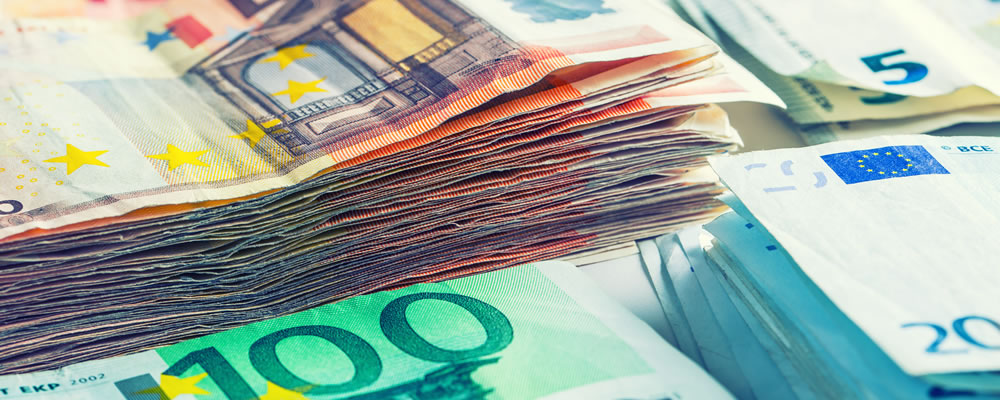While Eurozone data has remained generally disappointing this week the Euro to Pound exchange rate has been able to make some strong gains, benefitting from worries over the outlook of the UK economy.
- Eurozone Industrial Production disappointed in July – Weaker confidence in strength of domestic economy dented Euro
- Slowing UK wage growth prompted fresh Pound downtrend – Steady employment figures failed to shore up GBP demand
- Fed rate hike bets continued to support US Dollar strength – Speculation rife despite mixed domestic data
- EUR GBP exchange rate trended higher on dovish BoE – Possibility of 2016 rate cut continued to weigh on Sterling demand
Lack of BoE Action Failed to Weigh on EUR GBP Exchange Rate
Despite the Bank of England (BoE) voting unanimously to leave interest rates on hold the EUR GBP exchange rate remained on an uptrend. This was largely due to policymakers leaving the door open for another interest rate cut before the end of the year, a prospect that markets did not receive happily.
On Friday morning the EUR GBP exchange rate was trending higher in the region of 0.8507.
(Previously updated 10:08 15/09/16)
The robustness of the US Dollar has dragged on the Euro recently, although lower odds of an imminent Fed rate hike are likely to improve the appeal of the single currency.
Resurgent Worries over Greece Predicted to Weigh on Euro (EUR) Outlook
July’s Eurozone Industrial Production figures proved disappointing on Wednesday, with output shown to have contracted further on both the year and the month. This suggested that the domestic economy remains in a less-than-robust state, raising concerns over the outlook of the industrial sector. The Euro (EUR) has also come under pressure thanks to renewed anxiety over Greece, with its next tranche of bailout funds possibly in jeopardy due to the slow pace of creditor-mandated reforms. Even so, with the European Central Bank (ECB) looking unlikely to ease policy further in the near future the single currency has remained generally biased to the upside.
Expectations are a little more positive for Thursday’s Eurozone data, with the trade surplus forecast to have widened in July and the finalised Consumer Price Index for August predicted to show no change. If August’s modest uptick in inflationary pressure is confirmed then support for the Euro could rally, despite the 0.2% figure still being a long way from the ECB’s target range of 2%. Nevertheless, if tensions over Greece continue to flare then EUR exchange rates may struggle to make any particular gains in the near future.
EUR GBP Exchange Rate Trended Higher in Anticipation of BoE Rate Decision
Although the first raft of post-referendum UK jobs data appeared to be generally positive the Pound (GBP) continued to weaken against its rivals. While the ILO Unemployment Rate held steady at 4.9% in the three months to July this was countered by a sharper-than-expected slowing in average weekly earnings. Wage growth slowed from 2.3% to 2.1% in the same period, a particularly concerning development given the Bank of England’s (BoE) emphasis on the measure in its policy considerations. With inflation expected to increase over coming months real wages look set to be squeezed, a prospect that discouraged confidence in Sterling.
The Euro to Pound (EUR GBP) exchange rate continued to trend higher on Thursday morning, boosted ahead of the BoE’s September policy decision. Even though market expectations are for no further monetary loosening at this juncture investors remain cautious. However, if the message from the Monetary Policy Committee (MPC) is found to be less dovish than feared then the Pound could be in store for a strong rally. As researchers at RBS noted:
‘Given the extensive monetary policy action taking by the MPC in August, the high-frequency data over the past month or so have probably not been sufficiently poor to prompt a further Bank Rate cut. Dissenting dovish votes are certainly possible (Vlieghe and Haldane), though August’s extensive policy action and the unanimity in July suggests a reduced likelihood of dissenting votes in September – we forecast 9-0 for no change in Bank Rate in September.’
US Dollar (USD) Forecast to Remain Volatile on Fed Rate Hike Speculation
While markets have continued to speculate over the chances of the Federal Reserve moving to raise interest rates before the end of the year the US Dollar (USD) has struggled to maintain a strong uptrend. Confidence in the US economy was not boosted by the news that the Import Price Index had contracted further than forecast on the month in August, an indication that domestic inflationary pressure remains weak. As the Fed seems increasingly unlikely to hike rates at its September meeting the Euro to US Dollar (EUR USD) exchange rate has regained some ground.
Demand for the ‘Greenback’ is likely to soften in response to August’s Advance Retail Sales report, which is forecast to point towards fresh weakness. Should sales have fallen -0.1% on the month then sentiment towards the US Dollar is expected to turn bearish, with softer data likely to increase the caution of the Fed. However, if Friday’s Consumer Price Index data proves encouraging then the EUR USD exchange rate could see further volatility heading into the weekend.
Current EUR, GBP, USD Exchange Rates
At the time of writing, the Euro to Pound (EUR GBP) exchange rate was trending higher around 0.8500, while the Euro to US Dollar (EUR USD) pairing was slumped in the region of 1.1229.



